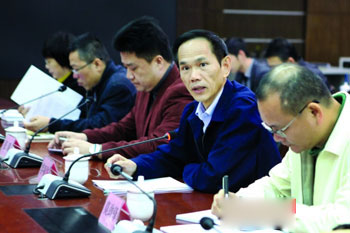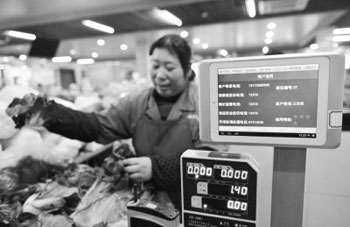Three deficiencies in beef cattle farming and four restrictions on the agricultural center
Original title: beef cattle: the disease of the "center" of agricultural production

Beef cattle breeding (data map)
Beef production in China has grown from scratch, and beef production has increased by 34% since 2000. Although beef consumption accounts for a low proportion of meat consumption, with the continuous improvement of people's living standards, beef, as a "semi-luxury", has increased its proportion in residents' meat consumption in recent years. The net income of beef cattle is rising rapidly, at the same time, the breeding cost is also increasing rapidly.
At present, what are the outstanding problems facing the production of beef cattle in China? What is the future trend and how to deal with it? Our reporter interviewed Wang Mingli, a researcher at the Institute of Agricultural economy and Development of the Chinese Academy of Agricultural Sciences, and looked forward to the development path of China's beef industry and even animal husbandry.
Three deficiencies and four constraints
Reporter: what are the problems facing the development of animal husbandry in China?
Wang Mingli: it is prominently shown in the "three deficiencies and four constraints". That is, lack of feed, lack of labor, lack of funds, production cost restriction, breeding land restriction, ecological environment restriction, feeding management level restriction.
First of all, the lack of feed, forage resources, especially the safety of feed grain will still perplex the development of animal husbandry for a long time. In 2005 and 2007, the total consumption of feed grain in China was 196 million tons and 205 million tons respectively, accounting for 40.54% and 40.82% of the total grain output, respectively. It is predicted that by 2020 and 2030, the proportion of feed grain in grain in China will reach 45% and 50% respectively.
The issue of feed grain will become a major issue of food security in China. And forage grass is even more scarce. In recent years, China's import of alfalfa has increased rapidly, including 2100 tons in 2007, 19600 tons in 2008, and more than 880000 tons in 2014.
Second, there is a shortage of labor. The impact of rural labor shortage on animal husbandry has been widespread.
Animal husbandry is a labor-intensive industry, and the labor intensity is so high that it is difficult to replace many aspects of machinery. However, with the rapid development of China's urban economy in recent years, a large number of rural labor force has been absorbed into the secondary and tertiary industries, and the labor force engaged in aquaculture is becoming less and less, and the quality is getting lower and lower. Not only that, the cost of hiring workers is getting higher and higher. The monthly income of migrant workers in 2014 was 2864 yuan, an increase of 255 yuan over the previous year.
Third, there is a lack of funds. The scale expansion of the aquaculture industry is faced with difficult problems such as difficult loans, high interest rates, large capital investment gap and so on.
With the intensification of resource constraints, the prices of various input factors such as feed, energy and labor costs are rising, and the cost of aquaculture has increased significantly, making it a high-input capital-intensive industry.
In order to build a cattle farm, an average of 10, 000 yuan in fixed assets is needed for each cow, and another 15-18000 yuan is needed for each cow. To build a 10,000 cattle farm with an initial investment of more than 10 million yuan, and to build an appropriate scale breeding farm with an annual output of 300,500 fattening cattle, the preliminary investment is also more than 500000 yuan.
At present, the aquaculture industry has few loan channels, lack of collateral, and the actual operation of the loan is difficult, the threshold is high, and the interest rate is high. Farmers can not get loans, which directly affects the expansion of cattle reproduction.
Reporter: does the production cost restrict the development of animal husbandry?
Wang Mingli: with the accelerated development of urbanization, the rise of agricultural labor costs and the continuous rise of feed prices, the development of animal husbandry in China has entered a comprehensive high-cost era.
From the end of 2008 to the end of 2014, the price of formula feed for fattening pigs, broilers and laying hens increased by 37.5%, 22.7% and 25.1%, respectively. From 2010 to 2012, for each pig out of the pen, the total cost increased by 39.1%, of which labor costs increased by 66%.
Reporter: can the demand for aquaculture land be met?
Wang Mingli: the difficulty of land for livestock and poultry farming has become an important constraint for standardized scale farming.
Many areas begin to restrict the development of livestock and poultry breeding industry, and it is difficult to examine and approve the land for livestock breeding industry. The cost of land transfer is high, most areas need 500 to 600 yuan per mu per year, and some areas have reached more than 1000 yuan. Because of the large population and little land in the eastern coastal areas and the Central Plains, it is more difficult to transfer a piece of land.
Affected by the acceleration of urbanization, land use is given priority to meet the needs of urban construction, the demand for breeding land is not guaranteed, it is very difficult for large-scale farms to lease land, and lease prices are also rising. As a result, livestock and poultry farming in many areas have to develop into deep mountains and ditches, and the models of raising pigs upstairs and raising chickens underground are also common.
Reporter: what is the relationship between ecological environment and the development of animal husbandry?
Wang Mingli: the restriction of ecological environment on animal husbandry has become increasingly prominent.
The area of the "three modernizations" of the grassland has been increasing, the livestock carrying capacity of the pastoral area has increased by more than three times compared with that at the beginning of the founding of the people's Republic of China, and the grassland ecology has been seriously damaged. In some areas with concentrated aquaculture, especially in the suburbs of big cities, the Central Plains and water network areas, large-scale farms are developed blindly without the carrying capacity of the surrounding environment, resulting in environmental pollution problems.
Reporter: does the level of feeding management also affect the development of animal husbandry?
Wang Mingli: the typical production models of beef cattle in China mainly include traditional grassland grazing and breeding, small-scale farms in agricultural areas, large-scale farms and milk male calf fattening. Compared with the developed countries, there is a big gap in the technical level of feeding and management. In particular, we should make unremitting efforts in raising in groups, fine management, paying attention to the comfort and health of animals, ensuring the supply of high-quality forage, and paying attention to the popularization and full coverage of advanced applicable technologies.
Prospect and prospect
Reporter: what is the trend of beef cattle breeding in China in the future?
Wang Mingli: beef cattle breeding is still difficult to change the downward trend. In the future, beef cattle stock will continue to remain low, it is difficult to recover quickly in the short term, and the supply of shelf cattle is still tight.
From 2009 to 2014, the benefit of beef cattle breeding was relatively optimistic, but the scale of beef cattle breeding showed a downward trend. There are two main reasons. First, beef cattle farming in China is dominated by retail investors, and the expansion of the scale is restricted by capital, land, breeding costs and other factors. Second, the enthusiasm of large-scale farmers is high, but affected by the shortage of cattle, the high price of calves, the long growth cycle of beef cattle and other factors, it is difficult to develop rapidly in the short term.
Reporter: how will beef import and processing develop?
Wang Mingli: beef imports have increased significantly, and slaughtering and processing enterprises have increased their dependence on foreign countries. From January to August this year, China has imported a total of 271200 tons of beef, an increase of 27.6 percent over the same period last year. With the growth of domestic demand, the import of beef cattle in China will increase greatly in the future.
The investigation shows that when beef cattle slaughtering and processing enterprises buy domestic fattening cattle, there will be a loss in processing according to the current market prices, but the prices of beef products in foreign countries such as Australia, Uruguay, Brazil and other countries are lower than those in the domestic market. Enterprises gradually tend to import foreign beef products for processing, increasing their dependence on foreign countries.
Reporter: what are the new developments in other aspects?
Wang Mingli: the cost of breeding continues to rise, and the price continues to rise. Driven by the rising breeding costs and beef demand, the prices of beef cattle and beef in China will continue to rise.
In addition, the gradual development of the high-end beef industry will promote the transformation and upgrading of the industry. With the acceleration of urbanization and the growth of urban population, the improvement of residents' income and consumption level will promote the continuous increase of beef consumption in China, and the demand for high-grade beef will increase sharply, and the supply will fall short of demand. This will also promote the upgrading and transformation of China's beef cattle industry.
Related
- A course of planting techniques and methods on how to grow carrots
- How to plant the latest tulips?
- Is it better to pick tea in the morning or in the afternoon? When is the best time for tea to be picked? what is the third or fifth tea?
- Launch Yuanxiao Happy combination Haocha + Tea Yuan healthy Taste
- Penghu Tourism "Fireworks 20 Parade with You"
- 2022 West Lake Happiness holds "Digital Revitalization Voucher" and draws iphone13 and laptop.
- Banqiao Fuzhou social houses are designed to change start-up combined with police elimination to create a safe and livable environment
- The convenient measure of "mechanical weeding" in Xinbei has been abused and the Agriculture Bureau has imposed heavy penalties on the illegal land consolidation.
- Changgeng University Joins Hands with Four Memory Factories to Rescue Memory Talent Shortage
- The list of Taiwan's top 100 MVP managers is listed by the Director-General of the Farmers' Association of Sanxia District.



